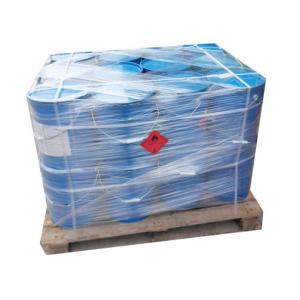

Add to Cart
Rubber To Metal Bonding Adhesive 826 Easy-to-Apply and Environmentally Resistant
Application
Rubber To Metal Bonding Adhesive 826 is a covercoat adhesive
designed for use over primers. It is formulated without heavy
metals and composed of a mixture of polymers, organic compounds and
mineral fillers dissolved or dispersed in an organic solvent
system. This adhesive system will bond compounds based on natural
rubber (NR), polyisoprene (IR), styrene-butadiene (SBR),
polybutadiene (BR), polychloroprene (CR), nitrile (NBR), butyl
(IIR) and EPDM polymers to metal.
Rubber To Metal Bonding Adhesive 826 is formulated to meet VOC
requirements under the China regulatory specification GB33372-2020.
Characteristics
1. Easy to Apply – applies easily by spray, dip or brush methods.
2. Convenient – requires only a single coat for most applications, reducing labor, solvent usage, inventory and shipping costs.
3. Environmentally Resistant – provides excellent resistance to various elements.
4. Environmentally Recommended – formulated without heavy metals.
5. Process Compatible – accommodates a wide range of processing conditions at moderate temperatures, including extended prebake.
Physical Properties
| Appearance | Black Liquid |
| Viscosity, cps @ 25°C (77°F) Brookfield LVT Spindle 2, 30 rpm | 300-1000 |
| Density(kg/m3) | 950 – 1050 |
| Solids Content by Weight, % | 21-24 |
| Flash Point (Seta), °C | 25-28 |
| Solvents | Xylene, Dimethyl Carbonate |
Applying 826
Surface Preparation – Thoroughly clean metal surfaces prior to
adhesive application. Remove protective oils, cutting oils and
greases by solvent degreasing or alkaline cleaning. Remove rust,
scale or oxide coatings by suitable chemical or mechanical cleaning
methods.
1. Chemical Cleaning
Chemical treatments are readily adapted to automated metal
treatment and adhesive application lines. Chemical treatments are
also used on metal parts that would be distorted by blast cleaning
or where tight tolerances must be maintained. Phosphatizing is a
commonly used chemical treatment for steel, while conversion
coatings are commonly used for aluminum.
2. Mechanical Cleaning
Grit blasting is the most widely used method of mechanical
cleaning. However, machining, grinding or wire brushing can be
used. Use steel grit to blast clean steel, cast iron and other
ferrous metals. Use aluminum oxide, sand or other nonferrous grit
to blast clean stainless steel, aluminum, brass, zinc and other
nonferrous metals.
For further detailed information on surface preparation of specific
substrates, refer to Exceed Adhesives application guide. Handle
clean metal surfaces with clean gloves to avoid contamination with
skin oils.
Mixing – Thoroughly stir Rubber To Rubber To Metal Bonding Adhesive
826 before use, and agitate sufficiently during use to keep
dispersed solids uniformly suspended. Use an air-driven or other
explosion-proof mixer for agitator drums or on other smaller
containers. If dilution is needed, use xylene or toluene.
Applying – Apply 826 adhesive by brush, dip, spray or any method
that gives a uniform coating and avoids excessive runs or tears.
Spray and dip application methods are recommended as they better
control uniformity and dry film thicknesses.
When using Rubber To Metal Bonding Adhesive 826 as a one-coat
adhesive, the dry film thickness should be maintained at 20.3-25.4
micron (0.8-1.0 mil), particularly if the bonded assembly is likely
to be exposed to severe environments. When used as a covercoat over
a primer, the dry film thickness of 826 should be 15.2- 20.3 micron
(0.6-0.8 mil).
3. Spraying
Dilute adhesive to a Zahn Cup #2 viscosity of approximately 24
seconds. This equates to approximately 3 parts adhesive to 2 parts
solvent.
4. Dipping
Use full strength. As a one-coat adhesive, a single dip application
of Rubber To Metal Bonding Adhesive 826 usually results in a dry
film thickness of 20.3-25.4 micron (0.8-1.0 mil). When used over a
primer, a single dip of 826 adhesive is sufficient to provide a
total dry film thickness of 25.4-30.5 micron (1.0-1.2 mil).
Curing – 826 can be used in compression, transfer and injection
molding procedures. Ideal bonding conditions involve a minimum
amount of time between loading the adhesive coated parts and
elastomer vulcanization. However, Rubber To Metal Bonding Adhesive
826 will resist moderate prebake times without affecting bond
performance.
Shelf Life/Storage
Shelf life is 6 months from date of shipment when stored at 21-27°C
(70-80°F) in original, unopened container. Do not store or use near
heat, sparks or open flame.
Packing
3.5kg/drum; 18kg/drum
